
Applying to medical or nursing school is more competitive than ever. High GPAs and strong test scores are still expected. But admissions committees now look for something more evidence of real-world readiness. That’s where ACLS (Advanced Cardiovascular Life Support) certification can make a difference. It signals that you’re not only academically capable but also trained in critical emergency protocols that save lives. For those who have already been certified, keeping credentials through acls recertification online also reflects continued commitment and up-to-date knowledge.
Demonstrate Initiative Early on
Completing ACLS certification before even starting a clinical program shows initiative. It tells admissions officers that you’re serious about the healthcare field. You’re not waiting to be told what to learn. Instead, you’re taking action to prepare. This kind of proactive mindset stands out. Schools seek students who are committed, capable, and willing to exceed the minimum requirements.
Reflect Clinical Readiness
ACLS is not just about passing a test. It trains you to think and act under pressure. You’ll learn to manage cardiac arrest, stroke, and other life-threatening emergencies. These are real situations you may encounter during clinical rotations. Having this certification demonstrates that you’re already familiar with high-stakes care. It also means you’ll require less orientation once you start hands-on training, making you a more attractive candidate.
Ensure Classroom Learning and Practical Skills

Most applicants can talk about anatomy, physiology, and pharmacology. ACLS certification lets you connect that academic knowledge to practical application. When you learn to administer epinephrine in a code blue scenario or interpret ECGs under time pressure, you’re putting theory into action. Schools value applicants who can bridge the gap between textbooks and patient care. This creates a more well-rounded, capable future clinician.
Stand Out in Interviews and Essays
When it’s time to write personal statements or attend interviews, your ACLS experience gives you something unique to discuss. You can describe the certification process, what you learned, and how it shaped your decision to pursue a healthcare career. Sharing how you handled simulated emergency situations can also reflect your ability to work under stress, think critically, and lead. These are all qualities that selection committees are actively looking for.
Prepare for Future Certifications

Getting ACLS certified early helps prepare you for other credentials down the line. Most healthcare roles require some mix of BLS, ACLS, and PALS. By completing ACLS now, you’ll find it easier to master more advanced certifications later. It also familiarizes you with the structure of medical certification exams, case-based scenarios, timed modules, and skill assessments. That kind of exposure is valuable, especially for those who haven’t had much clinical experience yet.
ACLS certification isn’t just for practicing healthcare professionals. For prospective medical and nursing students, it offers a unique way to stand out. It proves that you’re willing to go the extra mile to prepare for your future. More than that, it gives you skills that directly translate to patient care, even before your first day in the program. If you’re serious about a healthcare career, earning ACLS certification now is a smart, strategic step. It may not guarantee admission, but it helps ensure your application rises to the top.

















 In the ever-evolving field of medicine, it’s crucial to stay ahead of the curve by continuously expanding your knowledge and skills. Medical breakthroughs, research studies, and advancements in technology are constantly shaping the way healthcare is delivered. To elevate your medical career, you must be committed to lifelong learning. One way to expand your knowledge is through continuing education courses or advanced certifications. These opportunities allow you to gain expertise in specific areas of interest and stay up-to-date with the latest developments in your field.
In the ever-evolving field of medicine, it’s crucial to stay ahead of the curve by continuously expanding your knowledge and skills. Medical breakthroughs, research studies, and advancements in technology are constantly shaping the way healthcare is delivered. To elevate your medical career, you must be committed to lifelong learning. One way to expand your knowledge is through continuing education courses or advanced certifications. These opportunities allow you to gain expertise in specific areas of interest and stay up-to-date with the latest developments in your field. Building a strong professional network is crucial for success in any field, and the medical industry is no exception. By connecting with other professionals in your field, you can gain valuable insights, learn from their experiences, and potentially open doors to new opportunities. One way to start building your network is by attending conferences or workshops related to your specialty. These events provide an excellent platform to meet experts and like-minded individuals who share similar interests.
Building a strong professional network is crucial for success in any field, and the medical industry is no exception. By connecting with other professionals in your field, you can gain valuable insights, learn from their experiences, and potentially open doors to new opportunities. One way to start building your network is by attending conferences or workshops related to your specialty. These events provide an excellent platform to meet experts and like-minded individuals who share similar interests. A way to embrace technology in your career is by staying updated with the latest trends and advancements. Attend seminars, conferences, and workshops focused on technological innovations in healthcare. This will help you gain valuable insights into how emerging technologies can be integrated into your practice. Another way to leverage technology is by utilizing electronic health records (EHR) systems. These digital platforms allow for seamless communication between healthcare providers and improve overall patient care coordination.
A way to embrace technology in your career is by staying updated with the latest trends and advancements. Attend seminars, conferences, and workshops focused on technological innovations in healthcare. This will help you gain valuable insights into how emerging technologies can be integrated into your practice. Another way to leverage technology is by utilizing electronic health records (EHR) systems. These digital platforms allow for seamless communication between healthcare providers and improve overall patient care coordination.


 In addition to looking for a company with a good culture, you should also look for one that offers growth opportunities. No matter how much you love your job, there will come a time when you’ll start to feel stagnant. When that happens, it’s crucial to have an employer willing to invest in your development and help you grow professionally.
In addition to looking for a company with a good culture, you should also look for one that offers growth opportunities. No matter how much you love your job, there will come a time when you’ll start to feel stagnant. When that happens, it’s crucial to have an employer willing to invest in your development and help you grow professionally.
 One of the best ways to support your children during the college application process is to help them financially. The tuition, room, board, and other associated expenses can be a big burden for families. If you can help your child with some of these costs, it will take a lot of stress off their shoulders. There are a few ways that you can do this. You can help them fill out the FAFSA form to determine their eligibility for financial aid. You can also look into private scholarships and grants that your child may be eligible for. Finally, you can take out loans in your name to help pay for your child’s education.
One of the best ways to support your children during the college application process is to help them financially. The tuition, room, board, and other associated expenses can be a big burden for families. If you can help your child with some of these costs, it will take a lot of stress off their shoulders. There are a few ways that you can do this. You can help them fill out the FAFSA form to determine their eligibility for financial aid. You can also look into private scholarships and grants that your child may be eligible for. Finally, you can take out loans in your name to help pay for your child’s education. Believe me, gone are the days when the best professions are only being a doctor, an engineer, or a business manager. With the rise of new technologies, there are endless possibilities for professions. And that’s why you should assist your child in finding the college that best fits their interests and needs. This way, they will be more likely to succeed in their chosen field and be happier with their career choice overall. Encourage your child to research colleges, visit campuses, and talk to current students and professors.
Believe me, gone are the days when the best professions are only being a doctor, an engineer, or a business manager. With the rise of new technologies, there are endless possibilities for professions. And that’s why you should assist your child in finding the college that best fits their interests and needs. This way, they will be more likely to succeed in their chosen field and be happier with their career choice overall. Encourage your child to research colleges, visit campuses, and talk to current students and professors.
 One of the top benefits of becoming a financial expert is increased income. When you have knowledge and experience in the financial industry, you can command a higher salary. Many experts earn six-figure salaries. It allows you to live a comfortable lifestyle and save for retirement. In addition, knowing the financial industry can help you earn promotions and bonuses. Financial experts are in high demand, so if you have the skills and knowledge, you will be able to find a job that pays well.
One of the top benefits of becoming a financial expert is increased income. When you have knowledge and experience in the financial industry, you can command a higher salary. Many experts earn six-figure salaries. It allows you to live a comfortable lifestyle and save for retirement. In addition, knowing the financial industry can help you earn promotions and bonuses. Financial experts are in high demand, so if you have the skills and knowledge, you will be able to find a job that pays well. The fifth and final benefit of becoming a financial expert is making better financial decisions. It is because you will have the knowledge and experience to understand complex financial concepts. In addition, you will be able to apply this knowledge to your finances. It can help you save money, invest wisely, and avoid costly mistakes. Becoming a financial expert is a great way to improve your career and finances.
The fifth and final benefit of becoming a financial expert is making better financial decisions. It is because you will have the knowledge and experience to understand complex financial concepts. In addition, you will be able to apply this knowledge to your finances. It can help you save money, invest wisely, and avoid costly mistakes. Becoming a financial expert is a great way to improve your career and finances.
 To many students, being admitted to one of the ivies or other elite schools is already a significant accomplishment. It speaks volume of one’s abilities and how much hard work he has poured for academic excellence. Indeed, everyone who enters an elite school owns some bragging rights as not everyone is chosen.
To many students, being admitted to one of the ivies or other elite schools is already a significant accomplishment. It speaks volume of one’s abilities and how much hard work he has poured for academic excellence. Indeed, everyone who enters an elite school owns some bragging rights as not everyone is chosen. There’s no denying that parents play an important role into a student’s decision to aim for an elite college education. This is because of the common belief that graduating from an ivy or other highly selective educational institution is tantamount to getting successful later on in life. While this may not be true in some cases, others were able to take advantage of it.
There’s no denying that parents play an important role into a student’s decision to aim for an elite college education. This is because of the common belief that graduating from an ivy or other highly selective educational institution is tantamount to getting successful later on in life. While this may not be true in some cases, others were able to take advantage of it.
 are designed to help your child wake up and coordinate their movements. This is an essential stage in your child’s life, and thanks to the baby swimming sessions, he learns to tame his body in an enjoyable environment without the possibility of falls or injuries.
are designed to help your child wake up and coordinate their movements. This is an essential stage in your child’s life, and thanks to the baby swimming sessions, he learns to tame his body in an enjoyable environment without the possibility of falls or injuries. your child to relax, and you too at the same time! In fact, in the water, you move in zero gravity, and you only feel a third of your terrestrial weight. The muscles relax, and a feeling of well-being invades you.
your child to relax, and you too at the same time! In fact, in the water, you move in zero gravity, and you only feel a third of your terrestrial weight. The muscles relax, and a feeling of well-being invades you.
 Read English Books
Read English Books
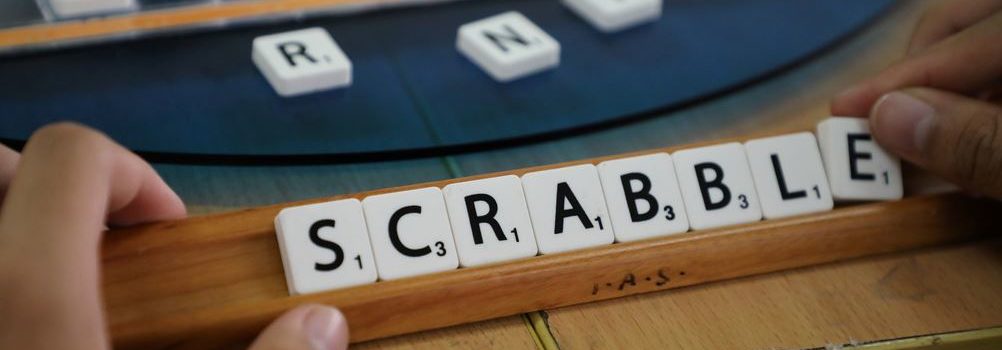
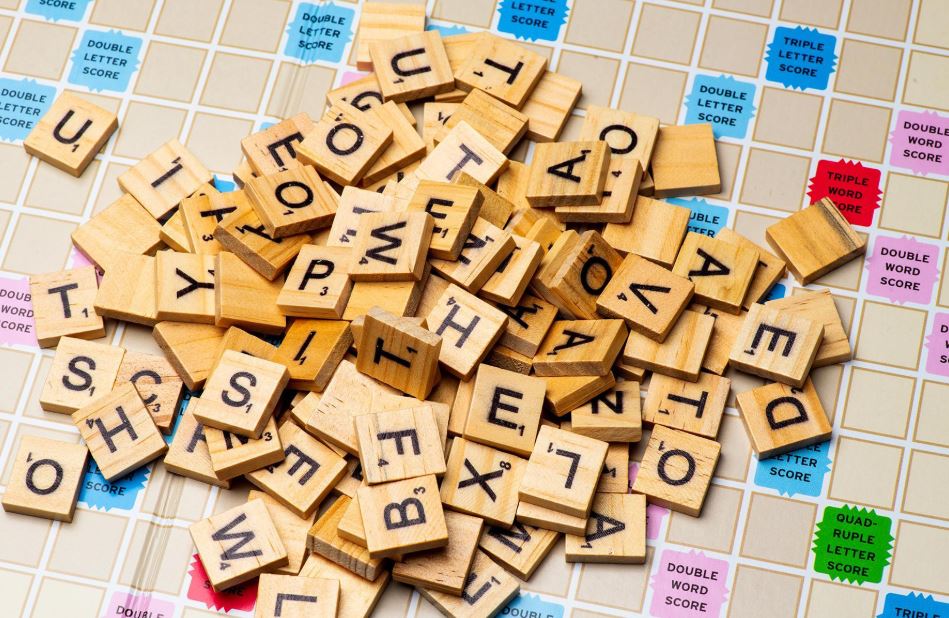 Various letters will have their point values, which mostly depends on how difficult it is to find a specific one. You cannot earn a point from blank tiles. Letters Q and Z have the highest value of 10 points, while easy to find letters like A, E, I, L, N, O, R, S, T and U can earn you a minimum of one point. You have to come up with words that contain letters with the highest scoring points. The best way to go about this is by using the word unscrambler. It is a tool that can help you identify some of the popular anagrams to help you secure more Scrabble points.
Various letters will have their point values, which mostly depends on how difficult it is to find a specific one. You cannot earn a point from blank tiles. Letters Q and Z have the highest value of 10 points, while easy to find letters like A, E, I, L, N, O, R, S, T and U can earn you a minimum of one point. You have to come up with words that contain letters with the highest scoring points. The best way to go about this is by using the word unscrambler. It is a tool that can help you identify some of the popular anagrams to help you secure more Scrabble points.
 Playing Scrabble more often can help improve your creativity. It is a game that requires you to come up with the best words to score more points. This requires some top-level creativity. You will be more creative, which you can also apply in various aspects of life.
Playing Scrabble more often can help improve your creativity. It is a game that requires you to come up with the best words to score more points. This requires some top-level creativity. You will be more creative, which you can also apply in various aspects of life.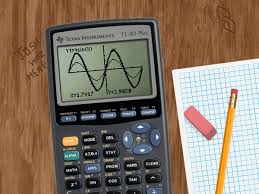 Buying a good calculator for college can make all the difference. If you are clueless about buying a calculator for college, make sure that you determine your needs and area of study. Your college policy will also determine the calculator that you buy because some colleges will give you the guideline.
Buying a good calculator for college can make all the difference. If you are clueless about buying a calculator for college, make sure that you determine your needs and area of study. Your college policy will also determine the calculator that you buy because some colleges will give you the guideline. A reading light is also necessary when in college. In case you want to catch up with some of the work before you go to bed, it is advisable to get a reading light.
A reading light is also necessary when in college. In case you want to catch up with some of the work before you go to bed, it is advisable to get a reading light.
 The first step is to inform and train your employees. Your employees need to understand the importance of OHS so that they can know when it is essential. You need to have open discussions on why you are implementing OHS in the organization.
The first step is to inform and train your employees. Your employees need to understand the importance of OHS so that they can know when it is essential. You need to have open discussions on why you are implementing OHS in the organization.
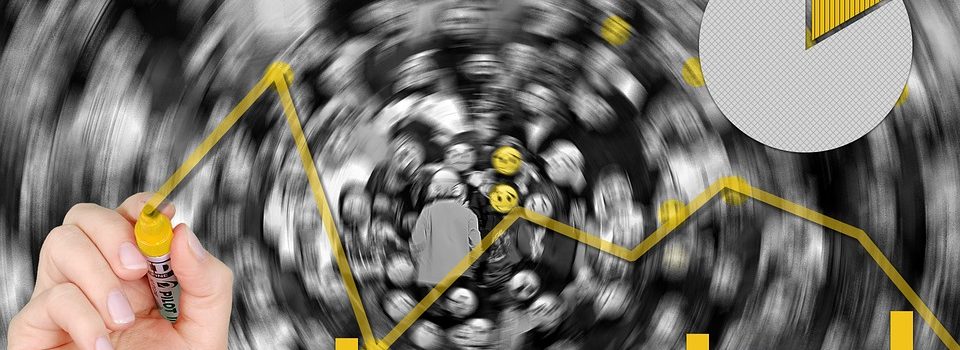


 When looking for the best online curse for whatever course that you want to take, it is important to consider what other people think. Reading online reviews on the online platforms that you will come across will give you more insight about what will happen if you choose a particular platform. It is good to go for those online platforms that have many positive reviews.
When looking for the best online curse for whatever course that you want to take, it is important to consider what other people think. Reading online reviews on the online platforms that you will come across will give you more insight about what will happen if you choose a particular platform. It is good to go for those online platforms that have many positive reviews.






 Information is power, and once you have it, the chances of you making wrong decisions are minimal. The good thing is that the internet is readily available to provide you with all the information that you need. You just need to identify some of the potential schools that you want your child to go. Once you do that, the next thing is to scrutiny each one of them and get to know if they are good for your child. You can also resolve to consult family members and friends who might be better experienced than you are.
Information is power, and once you have it, the chances of you making wrong decisions are minimal. The good thing is that the internet is readily available to provide you with all the information that you need. You just need to identify some of the potential schools that you want your child to go. Once you do that, the next thing is to scrutiny each one of them and get to know if they are good for your child. You can also resolve to consult family members and friends who might be better experienced than you are. You also need to make sure that you go through the curriculum that will be used for your child. Some curriculum is just not good because they tend to concentrate on matters to do with education only. Such kind of curriculum is not good for your kid and they should be avoided. A well-balanced curriculum is the best for your kid.
You also need to make sure that you go through the curriculum that will be used for your child. Some curriculum is just not good because they tend to concentrate on matters to do with education only. Such kind of curriculum is not good for your kid and they should be avoided. A well-balanced curriculum is the best for your kid.
 When you choose an English language school, make sure it has a quality assurance and accreditation from the council in that state. Not all the schools follow the right standards of care and education. Accredited schools are always inspected on a regular basis to ensure that the English lessons are taught to the required standards. Additionally, accreditation gives the students assurance of getting the best education that meets quality standards.
When you choose an English language school, make sure it has a quality assurance and accreditation from the council in that state. Not all the schools follow the right standards of care and education. Accredited schools are always inspected on a regular basis to ensure that the English lessons are taught to the required standards. Additionally, accreditation gives the students assurance of getting the best education that meets quality standards.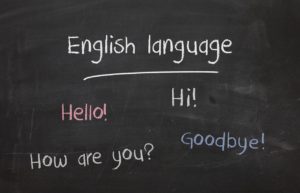 When you choose an English school, you need to consider learning centers that have been in operation for a longer period. This will guarantee you that the school has experience in teaching students with the best possible experience. You need to research the school performance besides its operation period. This will assist you to land on the right English language school.
When you choose an English school, you need to consider learning centers that have been in operation for a longer period. This will guarantee you that the school has experience in teaching students with the best possible experience. You need to research the school performance besides its operation period. This will assist you to land on the right English language school.
 All types of marketing are normally designed to ensure that they are able to boost your sales. Unfortunately, not all the methods and strategies that you choose can help you achieve this. This is why you need to consider video marketing in particular. The video can make someone who did not even think of buying your product to consider buying them. The visual attraction associated with video production is enough to do the marketing thing for you. All that you need to do is to find a company that has been in the industry for a long time and therefore understands what is expected of them.
All types of marketing are normally designed to ensure that they are able to boost your sales. Unfortunately, not all the methods and strategies that you choose can help you achieve this. This is why you need to consider video marketing in particular. The video can make someone who did not even think of buying your product to consider buying them. The visual attraction associated with video production is enough to do the marketing thing for you. All that you need to do is to find a company that has been in the industry for a long time and therefore understands what is expected of them.  You have been struggling to have your Google ranking increase but in vain; then it simply means that you have not realized that Google loves videos. Sites that make use of video marketing have high chances of having their websites ranked top in most search engines. This is attributed to the fact that many people love watching as compared to reading. So apart from creating an appealing image to users, you will also attract more new users to your website. All these will mean success as you are likely to record an increased sales volume.
You have been struggling to have your Google ranking increase but in vain; then it simply means that you have not realized that Google loves videos. Sites that make use of video marketing have high chances of having their websites ranked top in most search engines. This is attributed to the fact that many people love watching as compared to reading. So apart from creating an appealing image to users, you will also attract more new users to your website. All these will mean success as you are likely to record an increased sales volume.
 badly on you. You may be saying the truth but complaints would only deem you a complainer and a person who no one would wish to work with. The best practice in a job interview is to talk about the challenges you experienced but only focus on the positive results you eventually achieved.
badly on you. You may be saying the truth but complaints would only deem you a complainer and a person who no one would wish to work with. The best practice in a job interview is to talk about the challenges you experienced but only focus on the positive results you eventually achieved. You should never complain about your physical discomfort as excuses for not performing well in an interview since such are perceived as negativity. Besides, you should never compliment the interviewers on their physical appearance like say, their beauty. Instead, you might wish to make compliments regarding the recent success of the company or the recent achievement of the interviewer.
You should never complain about your physical discomfort as excuses for not performing well in an interview since such are perceived as negativity. Besides, you should never compliment the interviewers on their physical appearance like say, their beauty. Instead, you might wish to make compliments regarding the recent success of the company or the recent achievement of the interviewer.
 seeker. To be successful in the job market, one ought to define their professional brand thus making them unique before the eyes of recruiters. LinkedIn is, by no doubt, the de facto social platform in achieving an authentic representation of a job seeker since it provides them with a chance to showcase their achievements, skills, and career goals comprehensively.
seeker. To be successful in the job market, one ought to define their professional brand thus making them unique before the eyes of recruiters. LinkedIn is, by no doubt, the de facto social platform in achieving an authentic representation of a job seeker since it provides them with a chance to showcase their achievements, skills, and career goals comprehensively. Often, LinkedIn is optimized for search. Therefore, creating a completely optimized LinkedIn profile will help recruiters find you when they search for your name online. Statistics show that over three-quarters of recruiters use it to source for hires. Creating and optimizing your profile to describe what exactly you have to offer to employers makes you stand out as the best candidate for recruitment.
Often, LinkedIn is optimized for search. Therefore, creating a completely optimized LinkedIn profile will help recruiters find you when they search for your name online. Statistics show that over three-quarters of recruiters use it to source for hires. Creating and optimizing your profile to describe what exactly you have to offer to employers makes you stand out as the best candidate for recruitment.